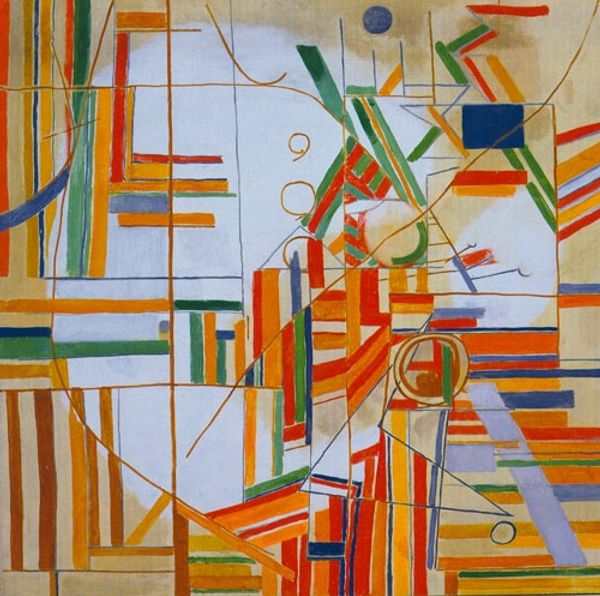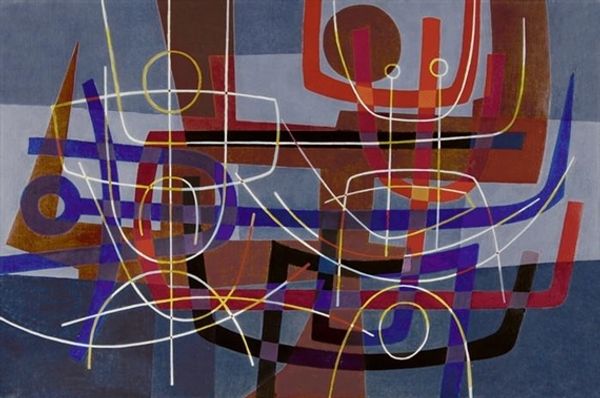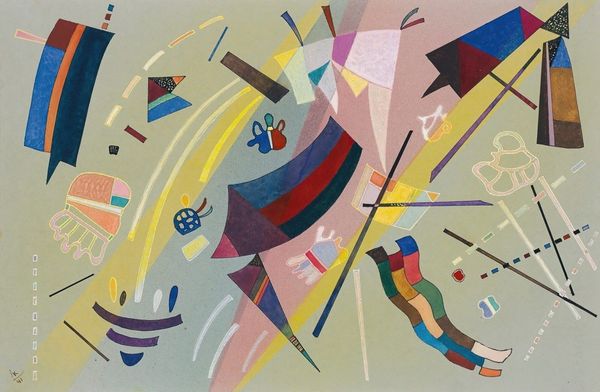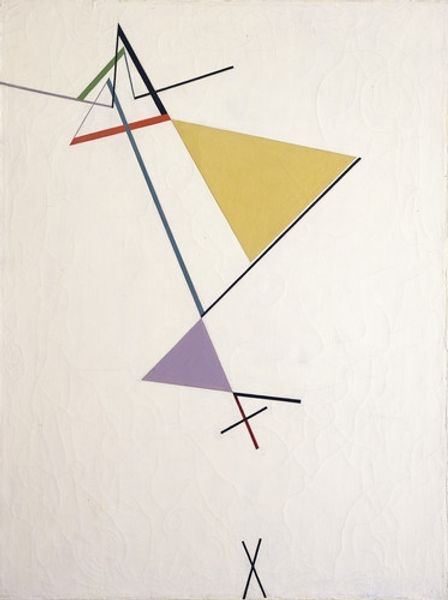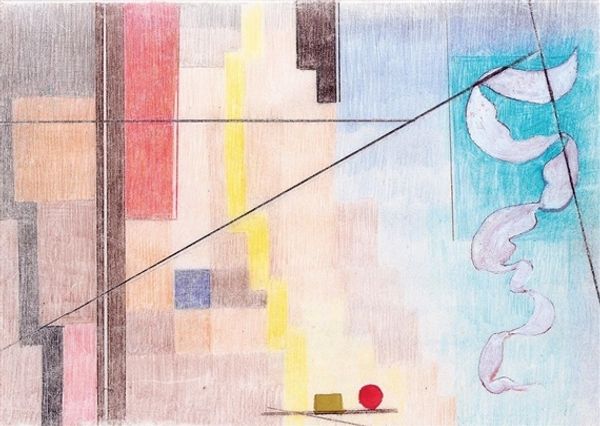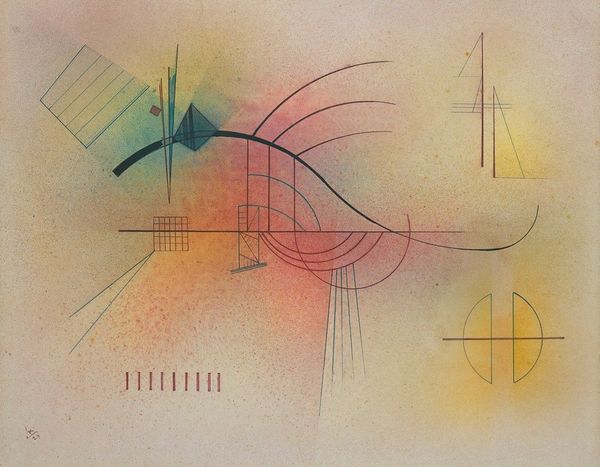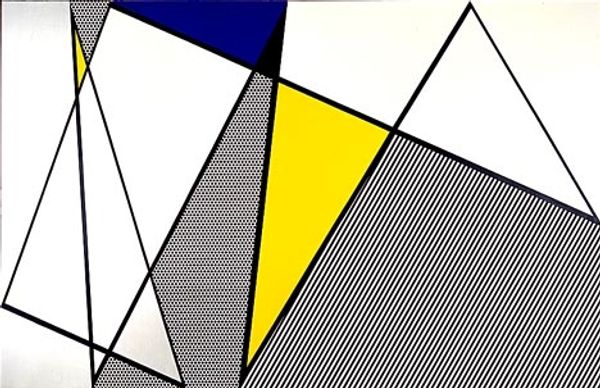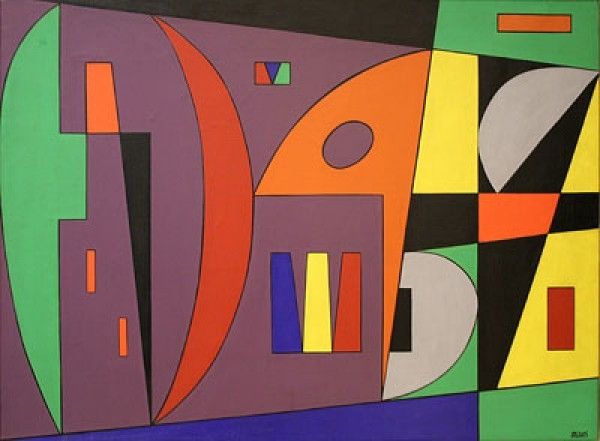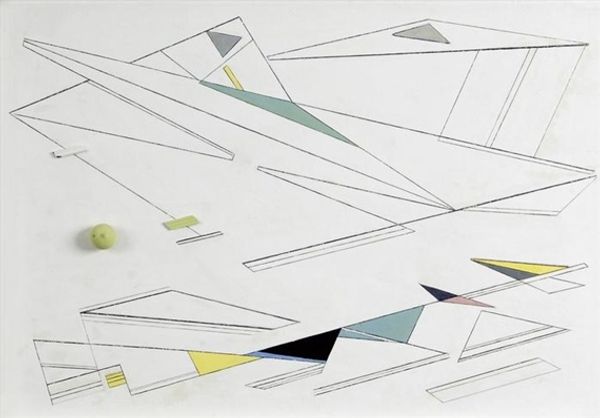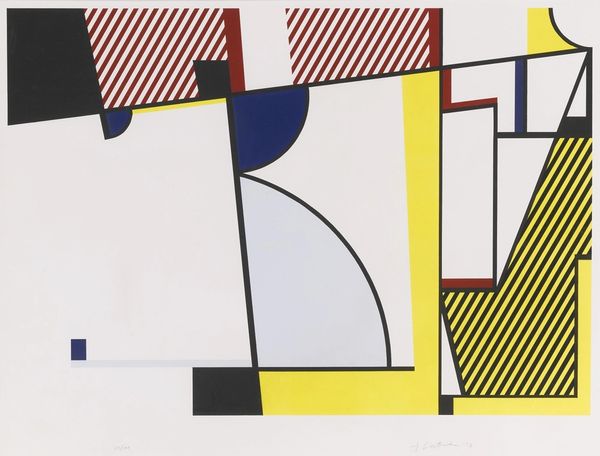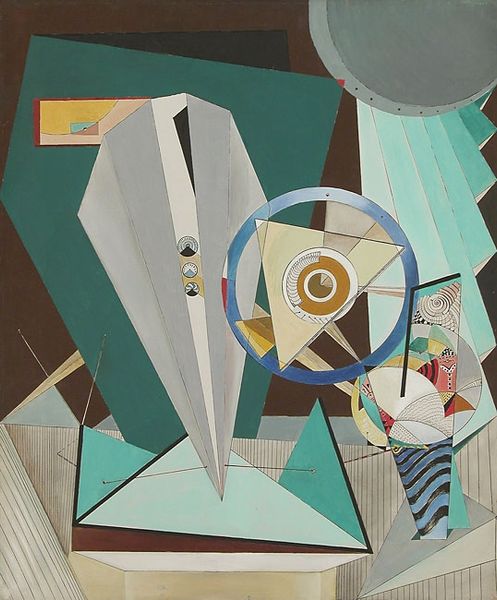
Copyright: Public Domain: Artvee
Curator: Standing before us is Wassily Kandinsky's 1923 watercolor, "Gewebe," meaning "fabric" or "texture" in German. Editor: Hmm. My first impression is organized chaos! It feels like a meticulously planned explosion. A flurry of geometric shapes dances on the page. There's such dynamism, I almost hear music in the composition. Curator: Kandinsky, especially during his Bauhaus years, aimed to synthesize art forms, finding parallels between music and visual art. This piece uses line, color, and form not to depict objects, but to evoke feeling. "Gewebe," true to its name, interweaves these elements to create a complex visual experience. Editor: The color palette feels deliberately restrained, yet incredibly powerful. The earthy tones anchor the brighter primary colors, giving a sense of groundedness. And the varying transparency of the watercolor creates layers of depth that almost make the shapes float. It's like looking through a kaleidoscope, constantly shifting and reforming. Does the title 'Gewebe' tell us something about its place at the Bauhaus? Curator: Absolutely. At the Bauhaus, there was an emphasis on the connections between art, craft, and industry. The term “Gewebe,” highlights that convergence, suggesting a design intended for textile production. Despite its seemingly spontaneous composition, its rigid shapes show that it could have been a textile template of geometric and abstract elements in this painting. Editor: It strikes me how revolutionary this must have been. Imagine encountering this in the 1920s. It completely challenges traditional notions of representation and aesthetic value. Kandinsky, a champion for spiritualism through pure form. It could very well feel, unsettling! Curator: Indeed. Kandinsky saw abstract art as a pathway to spiritual enlightenment. He believed that colors and forms, liberated from representational constraints, could directly impact the viewer's soul. "Gewebe" then, isn’t just a painting. It's an invitation to transcend the material world and experience pure emotion. Editor: It feels daring still. The freedom that exists on the page as the shapes flirt with each other…it really embodies the potential that exists when you throw all of the rules of realism to the side. I'm leaving this work feeling a jolt of something different. Curator: Absolutely. In "Gewebe", we witness Kandinsky at the Bauhaus trying to formulate visual structures in the absence of referential material to generate art to tap the core of human emotions through shape and colors.
Comments
No comments
Be the first to comment and join the conversation on the ultimate creative platform.

